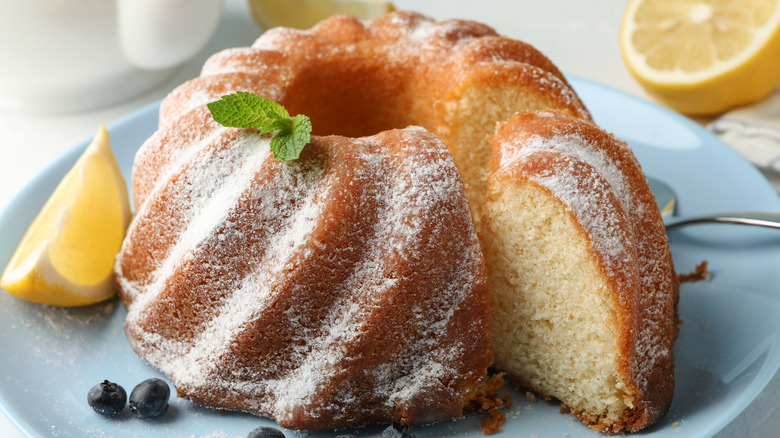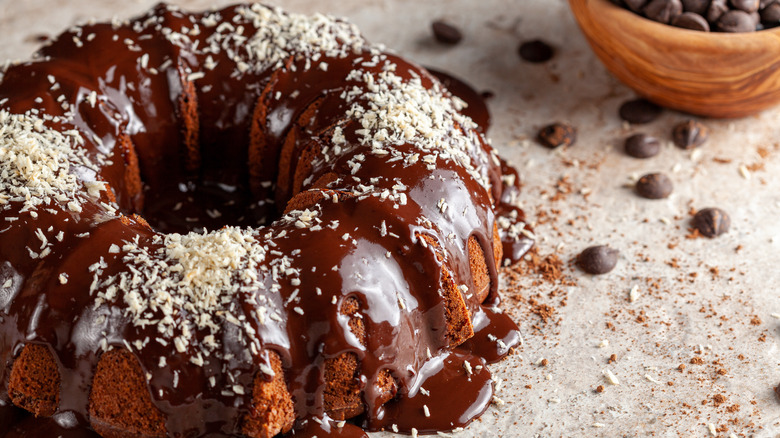The Original Bundt Pans Weighed Over 15 Pounds
Anyone who has ever attended a bake sale or family dinner party is likely familiar with the iconic Bundt cake. With over 70 million households owning a Bundt pan, according to Food & Wine, the round, ridged cake with a hole in the center is such a staple of American baking that it has a place in the Smithsonian Museum of American History and an entire chain of bakeries making, as their name proclaims, "Nothing Bundt Cakes." But did you know that this versatile dessert option wasn't always as ubiquitous as it is today? Most people know that Bundt cakes became trendy in the 1960s, but these delicious, easy-to-make desserts have a history much richer than any chocolate cake recipe.
Centuries before American home bakers started baking Bundt cakes, the "Gugelhupf," a high, ring or wreath-shaped cake, was already popular in medieval Europe, with recipes for them appearing in books dating back to 1581 (per Der Leiermann). The dessert, which was made with heavy, yeasted dough, was particularly popular in Germany and Austria. The popularity was so much so that, according to MNopedia, Jewish immigrants who emigrated from those countries to the U.S. in the 1930s and 1940s were dismayed they could not find the pans to make them in their new country.
Bundt gets big
According to MNopedia, many Jewish-German immigrants were unable to bring their traditional bakeware with them to the U.S. because it was too heavy to travel with. Traditionally, Gugelhupf pans were made of cast iron and weighed up to 15 pounds each. As German Girl in America explains, a Jewish women's group in Minnesota, wishing to recreate the dense cakes they grew up with for a charity bake sale, discovered that standard cake pans would not work with their recipes because the heavy batter needed the distinct hole in the center of the pan to allow the heat to reach the middle of the cake and bake it properly.
As reported by MNopedia, one member of the group, Mary Abrahamson, had her family's cast iron pan and, in 1950, asked the owner of local cookware company Nordic Ware, David Dalquist, to recreate it. He used much lighter cast aluminum, and the group began selling the pans and cakes for fundraising. Meanwhile, Dalquist began selling the newly-named Bundt (derived from the German word for group or organization "bund") pans in a local department store. It was not until 1966 when Bundt cake became a sensation following the second-place finish of Ella Helfrich's "tunnel of fudge" Bundt cake in the annual Pillsbury Bake-off. As German Girl in America notes, the publication of the recipe led to 200,000 orders placed in just days for the pan and the development of countless Bundt cake recipes.

